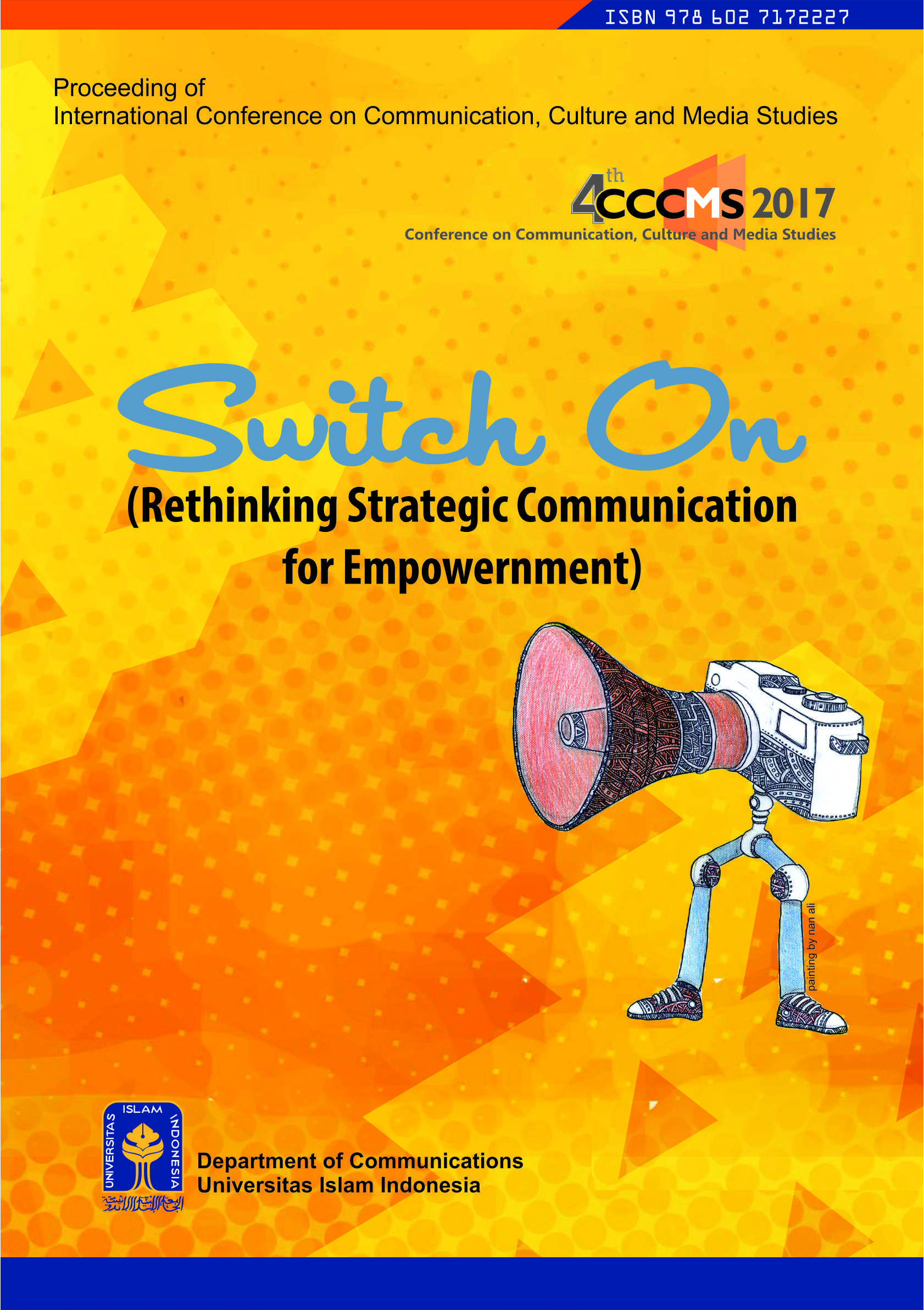Main Article Content
Abstract
The development of tourism rapidly made tourism as one sector that importantly to improving the country’s economic growth. One of Indonesia's efforts to improving economic growth is by increasing tourist arrivals through Indonesia's participation in ITB Berlin. ITB Berlin is the world's largest tourism market, held in Berlin, Germany.Paradigm and approach is applied in this research is the paradigm of constructivism and the qualitative approach which aims to analyze how tourism communication strategy conducted by Ministry of Tourism Indonesia in event ITB Berlin 2016.ITB Berlin 2016 is the 50th Indonesia’s participation.Researcher found that the tourism communication strategy conducted by Ministry of Tourism Indonesia refers to tourism marketing communication where marketing is more focused on the promotion of tourism through advertising in four media through electronic media which is advertising on International television channels, through print media such as ITB Berlin and TTG Daily News, through online media that is on google, Trip Advisor, and www.indonesia.travel, through outdoor media such as banners, advertising on bus and tram in Berlin. In addition, the promotion is also conducted through sales promotion such as free distribution of coffee and drinks for visitors, through personal selling in selling Janur handicrafts and service spa therapist and through Publicity/PR such as the existence of articles about Indonesia in ITB Berlin News day 2 and 3 and hold of press conference and press release. Then brand destination is done by branding brand destination of Indonesia through awareness campaign. Awareness campaign is one of the Indonesia’s effort to keep audiences to remember, to feel, and aware of the presence of Indonesia’s brand destination in Berlin.
Keywords: ITB Berlin 2016; strategy; tourism communication; marketing; brand destination.Â
Article Details
References
- Bungin, Burhan. (2015). Tourism Communication: MarketingdanBrand Destinasion. Jakarta: Prenada Media Group.
- Morissan. (2014). Public Relations Management: Become a Professional Public Relations Strategy. Jakarta: Kencana.
- Pitana, IGede. Putu G. Gayatri. (2005). Sociology of Tourism. Yogyakarta: CV Andi Offset.
- Rakhmat, Jalaluddin. (2001). Communication Research Methods. Bandung: PT RemajaRosdakarya..
- Shimp, Terence A. (2010). Advertising, Promotion, and other Aspects of Integrated Marketing Communications (8th Edition).
- South Western: Thomson.
- Suhandang. (2010). Advertising: Management, Tips and Strategy. Bandung: Nuansa.
- StatistikWisatawanMancanegara through http://www.kemenpar.go.id/asp/ringkasan.asp?c=110 (Access 20 September 2016).
References
Bungin, Burhan. (2015). Tourism Communication: MarketingdanBrand Destinasion. Jakarta: Prenada Media Group.
Morissan. (2014). Public Relations Management: Become a Professional Public Relations Strategy. Jakarta: Kencana.
Pitana, IGede. Putu G. Gayatri. (2005). Sociology of Tourism. Yogyakarta: CV Andi Offset.
Rakhmat, Jalaluddin. (2001). Communication Research Methods. Bandung: PT RemajaRosdakarya..
Shimp, Terence A. (2010). Advertising, Promotion, and other Aspects of Integrated Marketing Communications (8th Edition).
South Western: Thomson.
Suhandang. (2010). Advertising: Management, Tips and Strategy. Bandung: Nuansa.
StatistikWisatawanMancanegara through http://www.kemenpar.go.id/asp/ringkasan.asp?c=110 (Access 20 September 2016).
